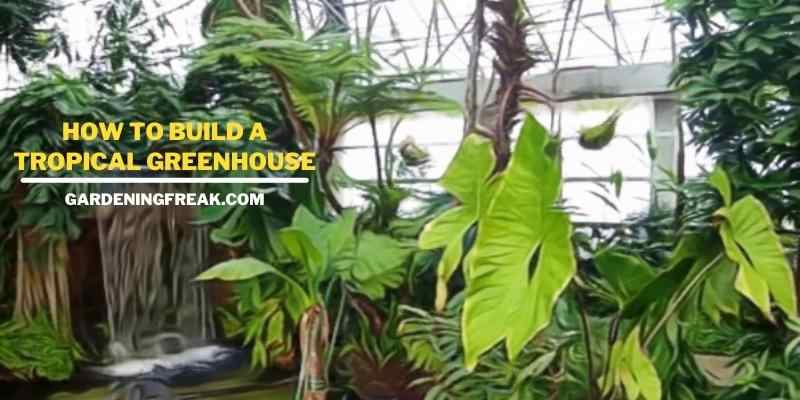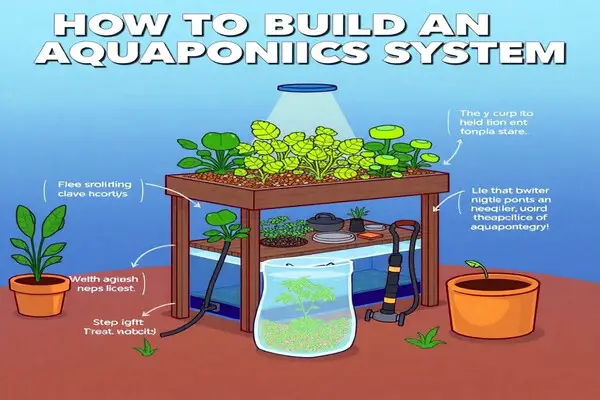When it comes to building a tropical greenhouse, considering some important factors is necessary. Those factors areover design, ideal temperature, ventilation system, proper sunlight, proper mulching, and so forth. Since the tropical atmosphere is more likely to create an increased moisture environment, you need to ensure an ideal moisture level. Also, you have to use a decent ventilation system to deal with excessive heating. If you are planning to start a project, it is crucial to know all the in-depth details about how to build a tropical greenhouse. Since you have landed in the right place, we will walk you through to create a perfect tropical greenhouse. Let’s dive in! Before starting if you already made a greenhouse and looking for tropical plants for it you can check the below link (#ADS)
How To Build A Tropical Greenhouse
When it comes to making a tropical greenhouse, there are a lot of things you need to consider. You can’t randomly start building a greenhouse. Considering the plants you want to grow and how well the plants can grow while coping with the external environments are always key factor to make a successful tropical greenhouse.Below are the ten rules you should stick with if you are want to make the best tropical greenhouse with 100% efficiency.
1. Selection Of The Base Of The Tropical Greenhouse
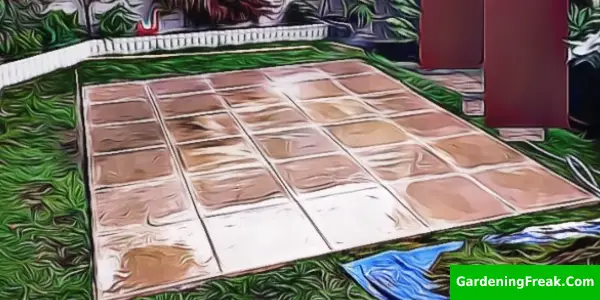
Have you planned to setup your greenhouse foundation at the ground level? Leave that thought. Keeping the greenhouse foundation to the ground level will prevent the water from flowing down smoothly. That’s why a decent underground foundation is necessary. You can choose a solid cement foundation, which will last years. However, it is a little bit expensive. When you don’t have a stick budget, this option appears convenient.Alternatively, you can install a small garden surrounding the plant habitat. This option is inexpensive, eco-friendly, and easy to do.
2. Maintain The Required Temperature
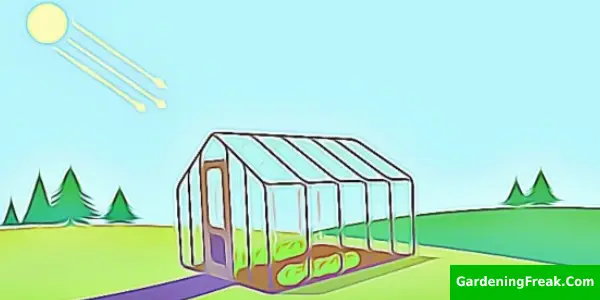
Unlike some other plants, it is crucial to take care of your tropical plants by providing sufficient growing temperatures. Maintaining a perfect temperature is important though it is a tough job. According to most garden experts, the ideal temperature should be around 65 to 85 degrees Fahrenheit. But make sure it does never goes below 40 degrees Fahrenheit. Otherwise, it will harm the plants heavily.
3. Ensure The Adequate Ventilation System

It is necessary to ensure adequate ventilation for our tropical greenhouse. You can use a wall-mounted exhaust fan to provide a decent horizontal cross-breeze to the entire area of the greenhouse system. Apart from keeping the air properly moist, it will prevent the growth of molds and moulds. Also, satisfactory air circulation will be established in the greenhouse system.
4. Proper Humidity And Moisture System
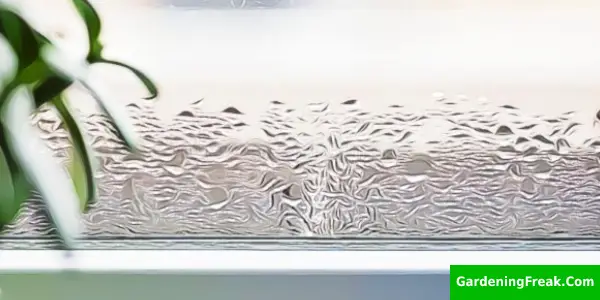
Tropical plants in a greenhouse love the water, so maintaining an ideal level of humidity and moisture is crucial. However, the humidity level should be neither too low nor too high. When the humidity level is excessively low, the tropical plants won’t grow properly. Likewise, if the humidity level is excessively high, your greenhouse tropical plants will fail to absorb certain nutrients like calcium.Now, you may ask how to maintain a perfect humidity level? You can implement several techniques to achieve this, such as maintaining sufficient space among plants, keeping greenhouse ground well-drained, warming the tropical plants.
5. Proper Watering And Irrigation System
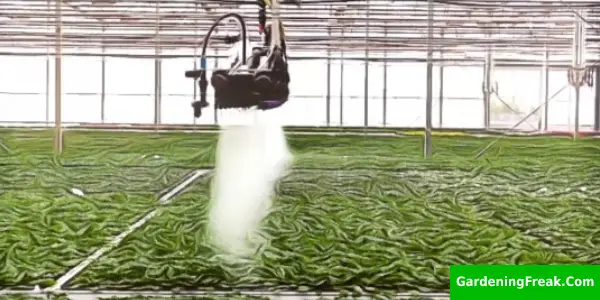
How often do you water your tropical plants? Consistently and properly watering the plants is essential. Normally, watering the plants in every other is a good practice. But watering period may vary based on the environmental condition and the plant size. During the drier and scorching days, plants need more water because soils are more prone to be dry quickly.In addition, check out whether the water is flowing down smoothly. The water should not store under the pot. Greenhouse mainly has two irrigation systems: subsurface system and overhead system. Choose accordingly based on the structure.
6. Proper Sunlight Location
The amount of sunlight your tropical greenhouse gets will depend on where you have installed it. According to most greenhouse experts, the south or southeast side is the best location for a greenhouse.But make sure it is a sunny area, especially for the winter. However, the tropical plants you choose also play a key role in the amount of sunlight you will need for the greenhouse. For example, plants like leafy greens are shade tolerant; they don’t need much sunlight, while root veggies such as carrots, radishes, potatoes need medium sunlight. But when you want to grow vine or normal veggies and fruits, you must ensure full sunlight for them.
7. Developing Tropical Ecosystem
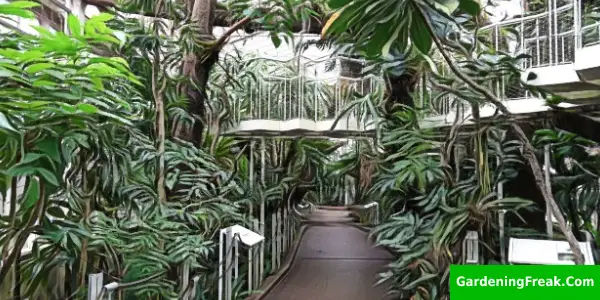
Regardless of the type of greenhouse you want to build, maintaining a favorable ecosystem will encourage the plant to grow better. So, what to use to ensure a better tropical ecosystem for your greenhouse?Generally, a lot of things are available that you can use to achieve this objective, such as ground cover, canopy, etc. It is better to plant some sturdy ground cover herbs, which can be an effective choice in preventing fungus issues.Some plants can offer dappled sunlight to other plants in a greenhouse, especially during the summer. They are known as the canopy. North American Passionfruits, indeterminate tomatoes, etc., are popular plants you can plant.What’s more, you can consider planting Low Height Plants, such as summer savory, electric daisy, or strawberries. Apart from that, Moderate Height Plants, such as lemongrass, box basil, pepper plant, spicy globe, etc. won’t be that bad as they are known as light blockers
8. Select Appropriate Shade Cloth
It is crucial to place a large shade cloth on the tropical greenhouse plants. Younger plants are not much effective in contributing toa better ecosystem or microclimate. You have to protect the tropical plants from direct sunlight. If your location has an extremely hot temperature, placing an aluminum shade cloth is a good rule of thumb. Instead of absorbing the sunlight, this type of material effectively reflects the sunlight quickly and properly. However, if you are on a budget or aluminum shade cloths are not readily available in your area, you can purchase a green shade or a tan. Some people may use black shade cloth, which mainly absorbs more sunlight or heat. This can harm your greenhouse tropical plants due to the increased warmth. The overdosed heat will negatively affect the photosynthesis and nutrient absorption of plants. Thus, younger plants will fail to grow naturally.
9. Use Proper Mulching
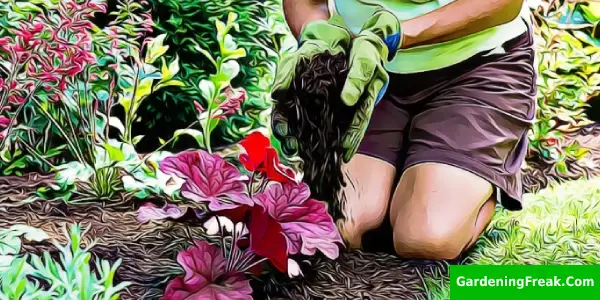
Your tropical plants in the greenhouse will be greatly benefitted from mulching. Apart from providing a protective barrier around the tropical plants, it will retain the water around the plants for a longer time.Not only this, you can count a proper layer of mulch as an insulation barrier to maintain a warm environment during the colder days. Likewise, it will ensure a cool environment during the hot summer days. Installing 1-2 layers of mulch around the grown-up tropical plants will prevent growing any weeds. When you want to grow a large number of crops in your greenhouse, you may prefer using pesticides, fertilizers, and heavy metals.Some residual effects may still stay on the plant soil, which can harm the plants later. However, proper mulching will eliminate the effects of such harmful items.
10. Use Beneficial Insects
The space of the tropical greenhouse is more likely to get attacks from various insects. Killing bees is simple. You just spray pesticides on them, and they will vanish after a few days. However, killing all bees may discourage the pollination process because these bees work as pollinators for your tropical plants. But sometimes, you have no option but to use pesticides to grow plants like lettuce, Bok Choy, Squash, or Spinach. But what you can do is keep the usage amount minimum and use it only for one or two days.If you notice some plants are heavily affected by insects, you should immediately and carefully remove them to avoid spreading the diseases to other plants. As a new greenhouse gardener, you first learn which insects are beneficial for your tropical greenhouse and which are not.
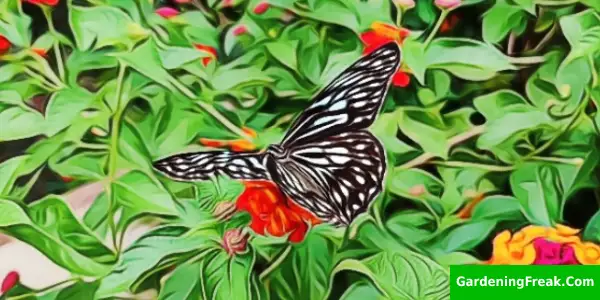
Insects like Lady beetles, Aphid Parasite, Aphid Predator, Bumblebee, Fly Predator, and various bugs are highly beneficial. You should avoid killing these insects,However, not all insects are good for your tropical greenhouse, and you should aim at killing them from time to time. Insects like caterpillars, fungus gnats, mealybugs, whiteflies, thrips, etc., are not good for greenhouse plants. Though it is a little bit challenging task, this will be highly beneficial for the entire greenhouse by creating a favorable ecosystem for the plants.
Tropical Plants For Greenhouse
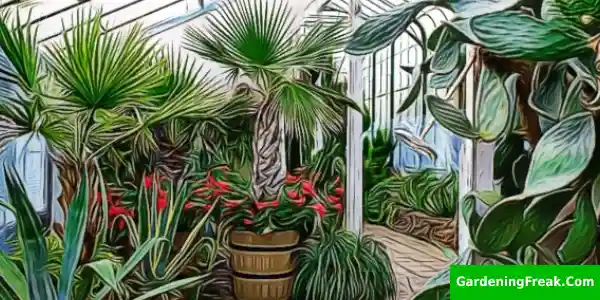
A wide range of tropical plants is available to plant in your greenhouse. However, considering the surrounding environment is important when choosing a plant to ensure it grows naturally without having any problem. Here we mention some of the most common and easily grow tropical plants for greenhouse and their required temperature. You can also check the tropical greenhouse plant price from the below link . (#Ads)
| Tropical Plants | Temperature Needed To Grow |
| Hibiscus Trionum | Hot, And Humid Climates |
| Cranberry Hibiscus / Hibiscus Acetosella | Hot, And Humid Climates |
| Thai Red Roselle / Hibiscus sabdariffa | 55 to 95 Degrees Fahrenheit |
| HeliconiaWagneriana | Semi-Tropical Climates |
| Orchids | 60 to 80 Degrees Fahrenheit |
| Venus Fly Traps | 70 to 80 Degrees Fahrenheit |
| Carnivorous Plants | 25 to 30Degrees Fahrenheit |
What Do Tropical Plants Need To Survive
Just like human beings, tropical plants need some basic elements to survive. Whether you are a regular or seasonal greenhouse gardener, it is necessary to keep your plants alive and naturally grow as much as possible. It doesn’t require any secret or mysterious things. Air, water, moisture, high-quality soil, fertilizers, periodical cleaning, and pruning are some common things each tropical plant needs.
-
Light
Natural sunlight plays a key role in the growth of plants. Planting the plants in a perfect place is crucial to get the optimal level of sunlight. Sun-loving types of plants properly may not grow if you plant them in low-shade areas. However, the amount of sunlight needed for plants will vary from one to another. Some may need bright light, while a few may thrive in low light too. Thus, it is crucial to know how much sunlight your plant needs and plant in an ideal place based on it.
-
Water
Just like human beings, plants can’t live without water. But not all plants will need the same level of water. Also, watering amount will vary based on the environmental condition. Make sure you don’t overwater the plants, which may cause root rot. Avoid watering any tap water that contains chemicals.It is a good rule of thumb to use watering containers, which will at room temperature and many chemicals vanish automatically.
-
Potting Soil
Though you can use your garden soil for your greenhouse plants, high-quality sterile potting soil is better as they have many rich organic matters and perlite additives to let plants grow faster.
-
Fertilizers
It is necessary to feed your tropical plants high-quality fertilizers occasionally to ensure stable growth. You can take recommendations from nursery specialists to find the best fertilizer for a particular plant.
-
Cleaning
Plant leaves will have a lot of dust over time. Practice cleaning them periodically using a damp cloth. You can also use foliage cleaner to remove dust from the plant leaves and foliages.
-
Pruning
Occasionally pruning some tropical plants is necessary to ensure optimal growth and thicken up them. Also, remove any brown leaves and deal with foliage from the plants to encourage the development of healthy foliage.
Can Tropical Plants Survive Winter In A Greenhouse
Tropical plants can survive winter in a greenhouse if you ensure a favorable growing environment. Here are some effective tips you can implement to provide better survival for your greenhouse tropical plants.
-
High layer of mulching
Add heavy mulch to the surrounding area of the plants, and it should be at least two inches.
-
Protective barrier
Setup protective barriers around the greenhouse so that ice, wind, and snow can’t harm the plants. Consider giving extra coverings too.
-
Ensure Optimal sunlight
Choose an optimal location for your greenhouse plants where they can receive a decent amount of sunlight.
-
Construct stone fence and brick wall
You can use stone fences and Brick walls around the greenhouse, which can absorb and retain a good amount of the sun’s heat. In addition to using stone fences and brick walls, you might consider incorporating other features that enhance the greenhouse’s climate control. For instance, effective ventilation systems can help regulate temperature, while strategic planting can provide shade during the hottest parts of the day. If you’re looking to maximize your greenhouse’s efficiency, consider researching DIY greenhouse gutter installation tips to ensure proper water drainage and collection for your plants.
-
Arranging micro-climate for plants
Arranging for a micro-climate will help the plants get more warm temperatures inside the greenhouse.
-
Use high quality fertilizer
Provide high-quality fertilizers to your plants, which have a rich amount of nutrition. This will keep them strong even in colder temperatures.
-
Water plants on right time
Water your tropical plants before the snow and frost because the moist soil can retain more heat through the night.
FAQS
What Is A Tropical Greenhouse?
A tropical greenhouse is mainly an internal house for tropical plants to grow in hot or cold climates. Its main purpose is to provide the plants with all the essential elements needed for growing naturally.
Why Do Different Climate Plants Need Different Greenhouse Designs?
Structures of greenhouses are not created equally. For example, a greenhouse is designed for plants that can easily survive in low-sunlight, windy weather. But this same greenhouse won't be an effective choice for sun-loving plants. Generally, how much protection a greenhouse provides depending upon the outside environment plays a key role in the variation in Greenhouse Designs. The protection level depends on the plants' type and local climate.
Can Tropical Plants Survive In A Greenhouse?
Though not all plants can survive in a greenhouse, you can plant a decent number of tropical plants in a greenhouse. You can grow various plants such as Hibiscus Trionum, Cranberry Hibiscus / Hibiscus Acetosella, Thai Red Roselle / Hibiscus sabdariffa, orchids, Venus flytraps, and other carnivorous plants.
Can Tropical Fruits Be Grown In A Greenhouse?
If your greenhouse is properly sheltered, you can easily grow tropical fruits. You can plant fruits like Grapefruit, Apricots, Nectarines, Peaches, Kumquat, Lemon, Lime, Orange, etc.However, ensuring the basic elements to grow is necessary. Also, proper moisture and humidity levels, regular watering, a decent drainage system, and increased protection during the winter season areessential.
How Do You Heat A Tropical Greenhouse?
When it comes to heating your tropical greenhouse, many options are available, but not all of them are effective. Many of them are expensive too. One of the most efficient ways to heat a greenhouse is using an average gas heater that does not need any ventilation with electric heat.
Final Thought
Here comes the conclusion part. We have already discussed all the nuts and bolts about how to build a tropical greenhouse. Make sure you follow all the ten rules we have mentioned in this article. Since environment pattern will vary from one to another, considering everything is necessary.You should not mind spending some extra bucks on getting the best outcome and ensuring a favorable environment for the tropical plants. Plus, it is necessary to be a little bit picky while choosing the plants because not all plants will grow effectively in your particular environment.Don’t forget to ensure all the basic elements for the plants so that they can thrive naturally and you can enjoy their fruits. Regularly taking care of the greenhouse is mandatory because otherwise, they won’t grow properly. Hopefully, this article has helped you to know some precise details on building a tropical greenhouse.

